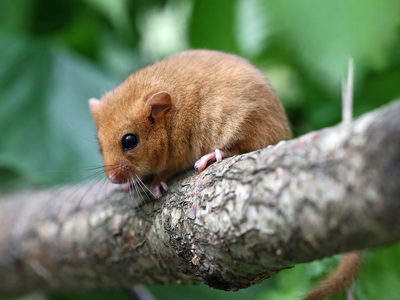
Hazel Dormouse captive breeding and reintroductions
Changes to woodland management and climate change are key factors negatively impacting hazel dormouse (Muscardinus avellanarius) numbers. Between 1995 and 2015, the Peoples Trust for Endangered Species (PTES) National Dormouse Monitoring Programme highlighted a 48% population decline. Southern England remains a stronghold for the species, but they’re becoming increasingly rare elsewhere.
Wildwood’s dedicated conservation team are leading experts in breeding dormice for the national reintroduction programme, which has seen over 180 dormice successfully reintroduced to woodlands where they have previously become extinct. As studbook holders for the species, staff at Wildwood liaise with each member of the National Dormouse Captive Breeders Group to select and pair up the animals, ensuring a strong genetic mix for future reintroductions.
